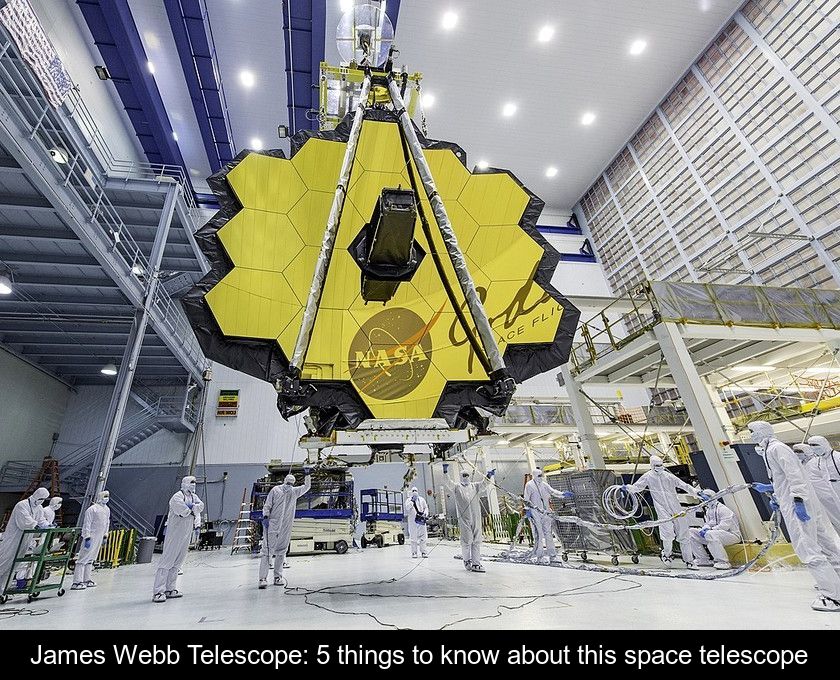James Webb Telescope: 5 Things To Know About This Space Telescope
Weather permitting, the James Webb Space Telescope will launch from Kourou on Saturday, December 25, 2021 at 1:20 p.m. Paris time. Here are 5 things to know about this little marvel of technology that is about to take off aboard the Ariane 5 rocket.
1- It succeeds Hubble
The predecessor to the James Webb Telescope, the famous Hubble Telescope has long been the most powerful space telescope ever built.
In 31 years of dedicated service, the telescope has sent us some 1.5 million never-before-seen images and made significant advances in our understanding of the universe.
The telescope, orbiting 545 km above Earth, has revealed exoplanets outside our solar system, black holes, and a galaxy 13 billion years old.
It is thus rightly that NASA called Hubble 'the most significant advance in astronomy since the invention of the telescope by Galileo'.
If all goes according to plan, James Webb (named after a former NASA executive) will take over and provide one more step in the knowledge of the cosmos.
2- It is a titanic project
The reason the launch of the James Webb Space Telescope is such an eagerly awaited event is because this new device represents a titanic challenge.
The James Webb Space Telescope or JWST is a collaboration between the U.S. (NASA), European (ESA) and Canadian (CSA) space agencies.
Not only did it require 40 million hours of work, a budget of 8.9 billion euros and the cooperation of 14 countries, but above all it could soon revolutionize our knowledge of astronomy.
This telescope, which weighs 6.2 tons, will be like a giant eye open to the universe.
3- Its vision is 100 times more precise than Hubble's
NASA has high hopes for the James Webb Space Telescope because it will have far vision 100 times more accurate than its predecessor.
It will also be able to observe the universe in infrared waves. This means it will be able to look through dust clouds that were impenetrable to Hubble.
4- It will allow us to go back in time
Since in space seeing further is seeing 'older', scientists hope that the James Webb Telescope will be able to observe the birth of the first galaxies.
A veritable time machine, the device that is now the most powerful space telescope ever built could reveal unprecedented information about the early universe.
Part of its mission will be to go back to the Big Bang 13.8 billion years ago and even 250 million years before! Scientists hope to witness the birth of the first galaxies and stars.
The second part of its mission will be to study exoplanets located around stars other than our Sun in search of habitable environments. With this new tool, great discoveries could be made.
5- It will take patience... and luck
Even though the James Webb Telescope is set to fly into space on Saturday, December 25, 2021, it will be 6 months before we get our first shots.
Moreover, we won't know if its launch is a success until after 29 days. Indeed, this telescope will take off folded like an origami on board the Ariane 5 rocket.
Its 6.5-meter mirror was too big to fit in the rocket's nose cone. That's why technicians designed a folded mirror, consisting of 18 smaller hexagonal mirrors. It will take nearly 200 successive technical operations to unfold it and make it operational.
Unlike Hubble, which orbits the Earth, this telescope will take a month to arrive at its destination, 1.5 million miles from Earth.
It is scheduled to orbit the Sun in a seldom-visited location in the universe called the L2 Lagrange point.









